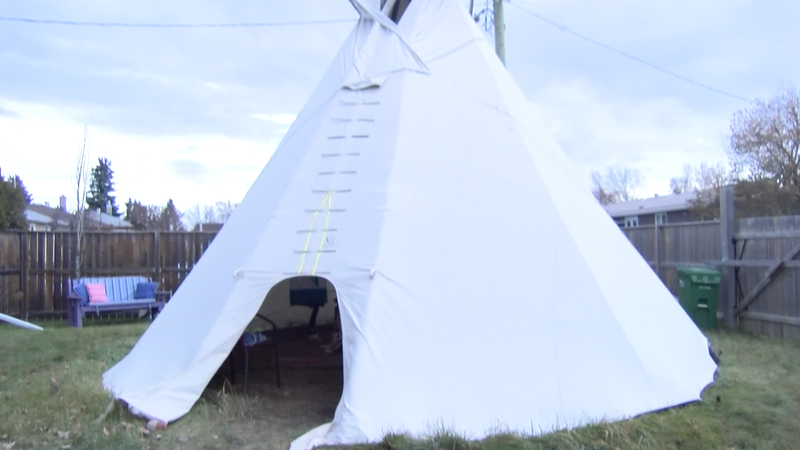
How a tipi in the middle of Red Deer is furthering truth and reconciliation
A quiet street in Red Deer’s Michener Hill neighbourhood is where a tipi calls home.
Seemingly, it’s the lone one on a residential property in the city, whereas many years ago, the land on which it sits – Treaty 7 territory — would have been home to many, not to mention sweat lodges, brimming with culture and ceremony.
The modern-day tipi, an elegantly geometric structure erected for the purpose of sharing and gaining knowledge, as well as love, prayer, healing, and connecting with friends and family, has been put away.
Its poles remain up, but the canvas, while waterproof and fireproof, would be damaged by harsh winter conditions.


